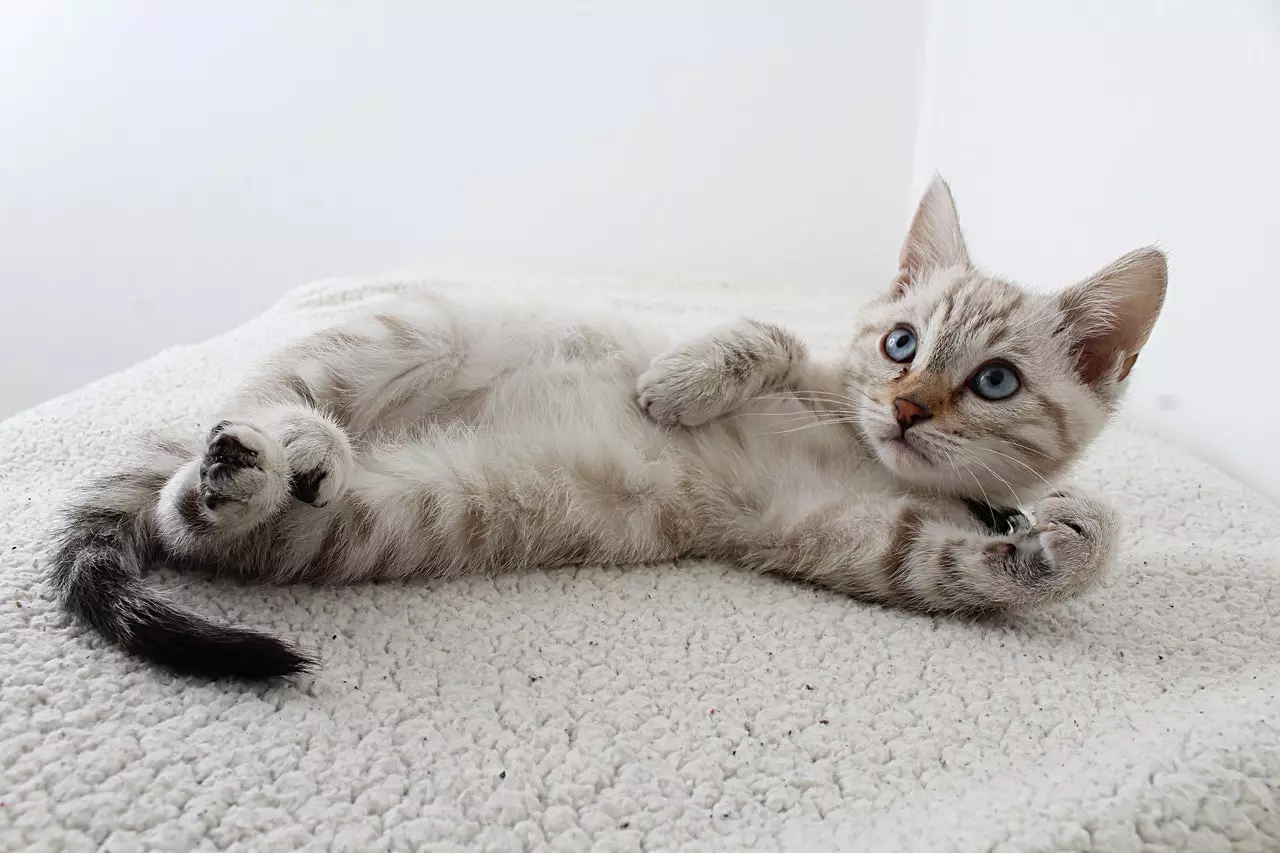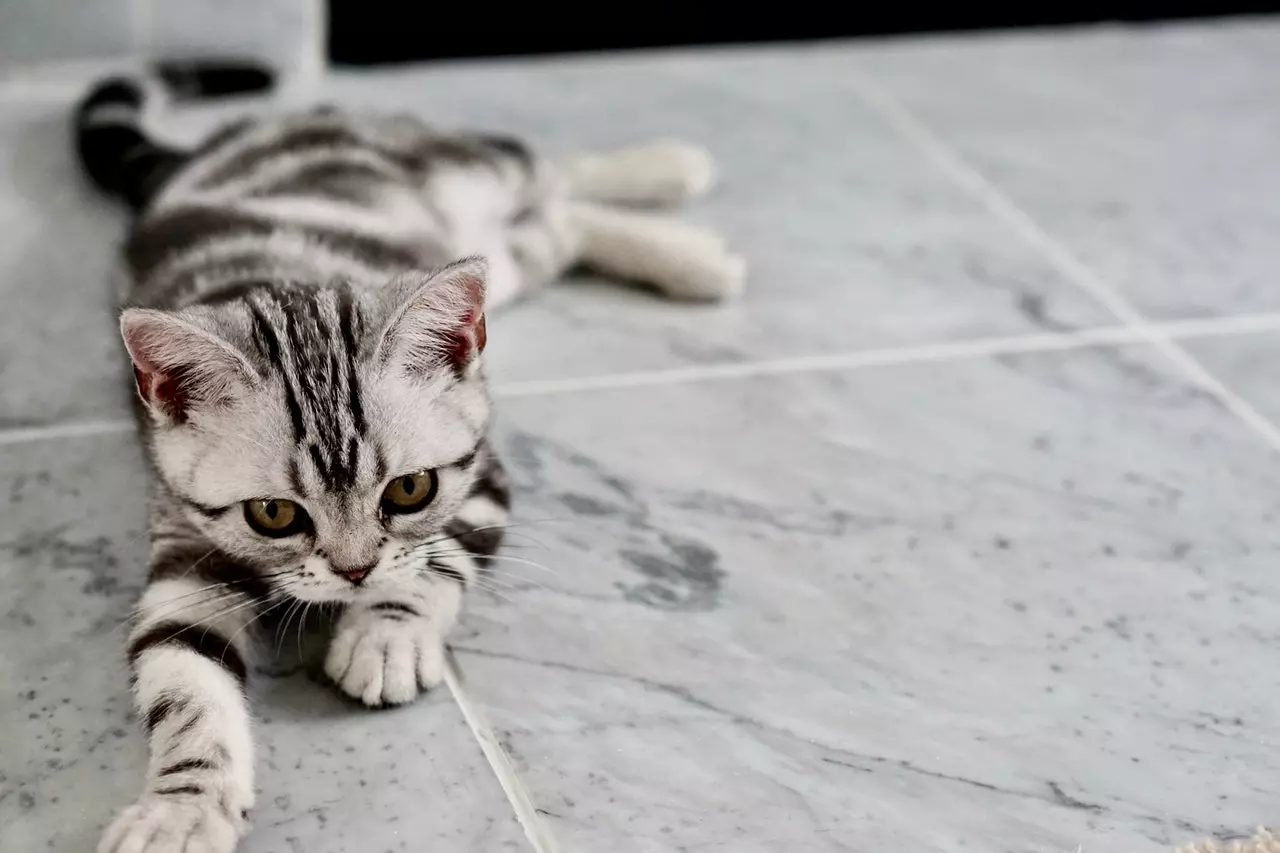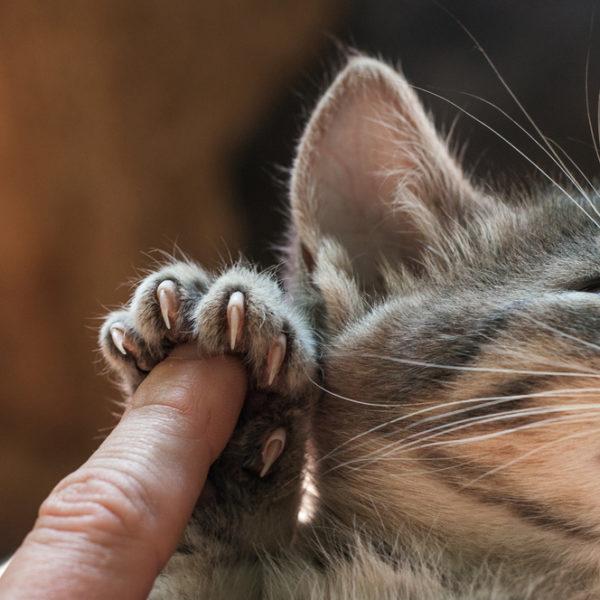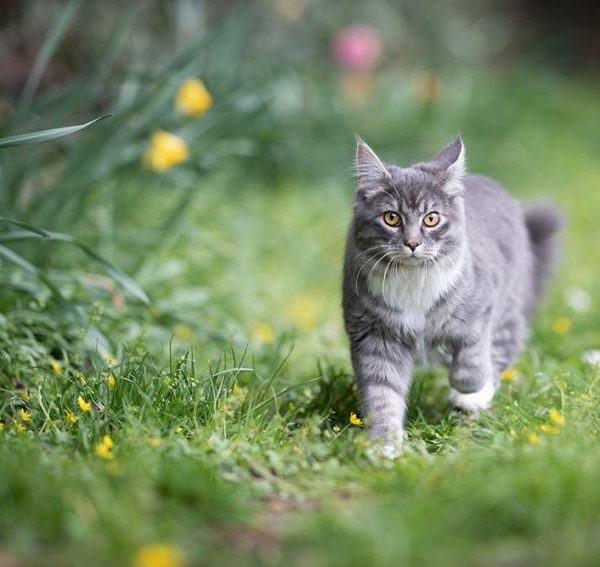In this article, we will look through the main causes and symptoms of cat disorientation, the reasons why your cat may be stumbling or walking weird, major disorientation diseases that your cat may be affected by, and treatments that will help solve the problem.
If you’re looking to scroll through the content because you are interested in a particular section of this article, be sure to use this table of content!
Why Is My Cat Disoriented?
If your cat is having trouble walking and standing, it may be that some of her senses of body balance have been disrupted.
Three senses are important for the sense of body balance in cats:
1. The sense of sight
2. The static sense
3. Sense coming from cat muscles, muscle tendons and joints.
All together, with their centers in the brain and the autonomic nervous system, they reflexively coordinate muscle work and balance.
Although all three of these sensations are important, balance is most commonly associated with a static sensation, whose seat is in the inner ear (the vestibular system).
This controls the balance and prevents the animal from falling, and if any of those systems are damaged, it will cause disorientation, discoordination and lack of balance in cats.
Causes Of Loss Of Balance In Cats
It is not always the case that their is a major underlying problem for the sudden loss of balance in your cat. However, cat’s sense of balance is quite important for her anatomy and a crucial aspect to her being.
Because of that, make sure to check out the most common causes of discoordination in cats listed below.
The most common causes of loss of balance in cats are:
- Positional vertigo
- Inflammation of the inner ear vestibule
- Auditory nerve tumor
- Circulatory disorders in the inner ear
- Blood flow disorders in the brain
- Changes in cervical structures of the spine (associated with older age)
There are two major cat diseases relating to cat’s coordination systems and they are called the vestibular syndrome and ataxia. We will look at both of them in this article below.
Symptoms
Symptoms of discoordination problem in kittens:
- Wide posture
- Wide gait
- Cramps
- Underdevelopment of the cerebellum
- Problems walking
- Shivering
- Tremor
Some kittens may also experience what is known as the shivering syndrome. It occurs from 10 days of age, when kittens begin to move. Tremor of the whole body occurs from 2-4 weeks of age and stops only when the kitten is completely at rest.

Vestibular Syndrome
Vestibular feline syndrome or idiopathic vestibular syndrome is a disease that affects the vestibular apparatus, which is part of the “control center” for a cat’s balance. The apparatus falls out of balance, for no apparent reason.
Vestibular syndrome is a general term that describes diseases of the vestibular system. There is the peripheral and central vestibular syndrome.
Causes Of Vestibular Syndrome In Cats
The root of the problem is thought to be changes that occur in the peripheral vestibular apparatus, which is located deep in the ear. It is currently considered that the endolymph of the semicircular canal, ie. the access part with special sensory cells in the channel, becomes abnormal.
Inflammation, abnormal endolymphatic circulation, or toxic secretions involving receptors or nerves are thought to be the cause of this balance problem.
However, the exact cause has not been determined so far.
There is no obvious pattern. The cases are different, although some research has shown that the problem is more common in late summer or early fall. Some veterinarians believe that the occurrence of this problem is related to respiratory infections.
Causes of central vestibular syndrome range from:
- Cerebral hemorrhage
- Infectious encephalitis
- Meningoencephalitis
- Head trauma
- Toxic drugs
- Brain cyst
- Brain tumor
- Thiamine deficiency
- Neurodegenerative diseases
Causes of peripheral vestibular syndrome are:
- Diseases of the middle or inner ear (infection or tumor)
- Nasopharyngeal polyps
- Head trauma
- Toxicity of some drugs
- Less active thyroid gland
Symptoms Of Vestibular Syndrome In Cats
The symptoms of this syndrome can be very worrying for owners, who often think that the cat has suffered a stroke.
The symptoms are:
- Painful vocalization
- Rolling on the floor
- Head tilted to one side
- Eye flickering back and forth – nystagmus
- Leaning against walls or furniture
- Falling
- Vomiting
- Intoxicated look
Sometimes, if both ears are affected, the head is not so tilted and it can happen that the cat does not move at all.
Cats affected by these symptoms are very confused by this condition.
Treatment Of Vestibular Syndrome In Cats
Improvement in the symptoms of this disease is usually seen after 2-3 treatments. It can take several weeks for the cat to fully recover, regain balance and mobility. Compared to other diseases that can cause balance disorders, the diagnosis of vestibular syndrome is even the best option.
Treatment of vestibular syndrome includes:
- Keeping a cat in a room that is upholstered and where there are no stairs.
- If she can’t get up on her own at all, she will need your help, you have to change her position every hour or two so that she doesn’t get wounds.
- You may need to carry your cat to a litter box. Accidents will happen so check her bedding often.
- Bring her food and water and make sure she eats and drinks.
- Your veterinarian may prescribe a nausea medication.
In more serious cases, sedatives and infusions are given.

Ataxia
Ataxia is a condition associated with sensory dysfunction, which leads to loss of coordination of the limbs, head and / or trunk.
There are three clinical forms of ataxia: sensory (proprioceptive), vestibular and cerebellar.
All three forms lead to changes in limb coordination, but vestibular and cerebellar also lead to changes in head and neck movements.
Causes Of Ataxia In Cats
The causes of Ataxia in cats can be numerous.
They range from:
- Congenital defects
- Degeneration
- Tumors
- Inflammatory processes
- Infectious diseases
- Poisoning
- Metabolic disorders
- Trauma
- Circulatory disorders
- Other unknown diseases
Symptoms Of Ataxia In Cats
- Sensory ataxia: occurs when there is mild pressure on the spinal cord. Typical symptoms of this form are incorrect (unnatural) posture of the legs and, as the disease progresses, progressive weakness. Sensory ataxia can occur with injuries to the spinal cord, brainstem and cerebellum.
- Vestibular ataxia: occurs when there is an injury to the vestibulocochlear nerve, which is otherwise responsible for transmitting information related to balance, from the inner ear to the brain.
With this form, changes in the position of the head and neck can occur, and the animal will usually have a wrong sense of movement or hearing problems.
From the external signs can still be seen leaning to one side, loss of balance, falling or rolling. In the central form, there are usually changes in eye movements, perception, weakness of the legs, drowsiness or coma. There are no such changes in the peripheral form - Cerebellar ataxia: is also manifested in uncoordinated movements of the limbs, head and neck, but also by large, disproportionate steps, unusual gait, tremor of the head, body and torso.
Treatment Of Ataxia In Cats
Every treatment of Ataxia will require veterinary help.
An accurate diagnosis certainly requires: an extensive history, clinical and neurological examination, blood and urine findings, and an X-ray. CT and magnetic resonance imaging, where they are able to be performed, are very useful diagnostic methods.
Also, when it is suspected that the source of the disease is in the nervous system, it is desirable to make a puncture and analysis of the cerebrospinal fluid.
Your veterinarian will determine the necessary laboratory and x-rays after a thorough clinical examination. searches and after the findings it is possible to predict the situation.
Everything will, of course, depend on the cause of the disease.
What you can do until then is to provide the kitten with a quiet and comfortable place where he can rest and to reduce or limit his movements so that he does not get injured somewhere.
Other Potential Causes Of Balance Problems In Cats
If your cat has any of these symptoms, your veterinarian should do a detailed examination to determine if it is vestibular syndrome or some other illness.
Some other causes of balance problems are:
- Polyps, infections or tumors of the ear canal
- Encephalitis: a brain infection that may be a symptom of FIP or toxoplasmosis
- Spinal cord disease or trauma
- Poisoning
Did you like our article? Do you have any additional questions? Let us know in the comments section below!




What I want to know is if the cat suffering from neurological disease, are they in pain? My cat has gonna really bad in the last few days. Is she suffering!!
Hi Gina,
I’m not a veterinarian, but I can try to provide some general information. Cats with neurological diseases can experience a range of symptoms, and whether or not they are in pain can vary based on the specific condition and its severity. Some neurological issues may cause discomfort or pain, while others might not.
Since your cat’s well-being is important, I recommend reaching out to a veterinarian as soon as possible. They can assess your cat’s condition, provide a proper diagnosis, and recommend appropriate care and treatment options. It’s always best to have a professional evaluate your cat’s health to ensure she receives the necessary care.
Take care of your furry friend and get in touch with a vet for guidance.